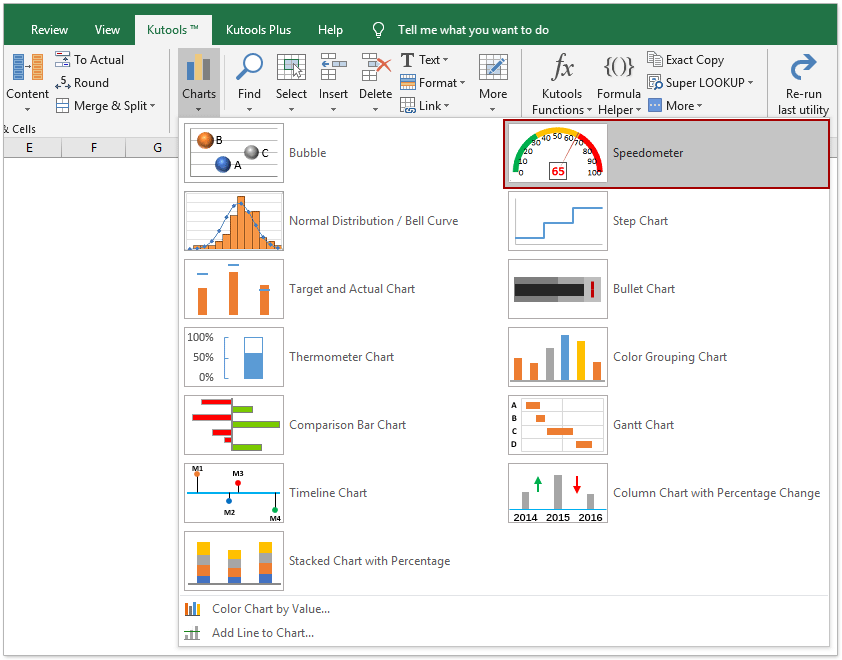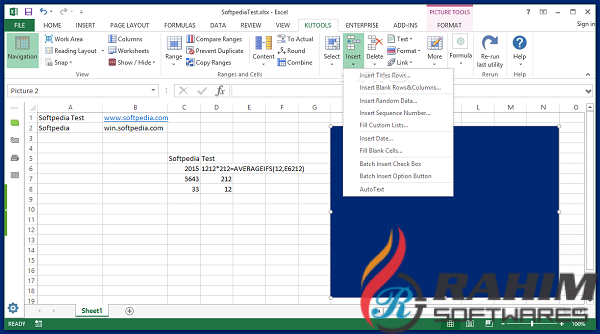

- Kutools for excel tutorial pdf how to#
- Kutools for excel tutorial pdf pdf#
- Kutools for excel tutorial pdf portable#
- Kutools for excel tutorial pdf code#
Kutools for excel tutorial pdf pdf#
Therefore, PDF documents allow you (and other users) to: The reason for this is that the PDF file itself carries the complete description of the document layout and all the information that is necessary to correctly display the electronic document. One of the main appeals of the PDF file format is that the document representation is independent of any of the following: In very broad terms the PDF format is a digital format that you can use to represent electronic documents.
Kutools for excel tutorial pdf portable#
The acronym PDF stands for Portable Document Format.
Kutools for excel tutorial pdf code#
If you're interested in the opposite process (converting Excel files to PDF), I provide a thorough explanation of the topic plus 10 examples of VBA code in this blog post.īefore I explain each of the methods that you can use to convert a PDF file to Excel, let's start by taking a look at: What Are PDF Files
Kutools for excel tutorial pdf how to#

Doing this requires knowledge of both Excel and PDF.Īt the same time, the ability to accurately and quickly convert PDF files to Excel is very valuable. You may have also noticed that successfully converting a PDF file into an Excel worksheet is hard. How can you convert a PDF file into an Excel worksheet? If you're in such a situation, you may ask: In some of those cases, you may need to analyze the data within a particular PDF file with Excel. You probably encounter PDF files at work (almost) every day. Portable Document Format (.pdf) files are one of the most widely used file formats for electronic documents. This is a particular file format whose data is not that easy to bring into Excel despite being very popular and widely used: There is, however, one big exception to this rule.

You probably won't encounter such problems very frequently as long as you don't work with obscure file formats that aren't supported by Excel. When the particular file format you're using isn't supported by Excel, importing data may be slightly more complicated.Īs a general matter, I have no problems with these limitations. However, the Get External Data group of commands isn't the topic of this blog post. In some of these cases, the tools you require to do the job are readily available in Excel's Get External Data group of commands within the Data tab. The most common text file formats, such as comma-separated values (.csv) and text (.txt) files.You now need to hide and protect your workbook.Most recent versions of Microsoft Office have several features that allow you to, among others, import data into Excel from the following sources: Select the Protection tab, deselect Locked and click OK (this will unlock the cells so that data can be entered in them when the sheet is protected).Right mouse click and choose Format Cells.With the Table still selected, from the Table Tools - Design tab, in the Tools group, choose Convert to Range (this removes the unwanted “Table” features).From the Home tab, in the Styles group, click the Format as Table command.Select all the cells from A4:C14 (the last question).The easiest way to format it is as a Table In C2, (opposite Your Score) type the formula.This will return the number of questions in your quiz In C1, (opposite Number of Questions) type the formula:.Copy this formula down column C so it appears opposite each question.

This checks the answer in B5 to see if it matches the contents of cell A5 in the Answers sheet and displays Correct or Incorrect You need to insert formulas to check answers and keep score. On the Quiz sheet, adjust the width of column A so you can read the questions


 0 kommentar(er)
0 kommentar(er)
